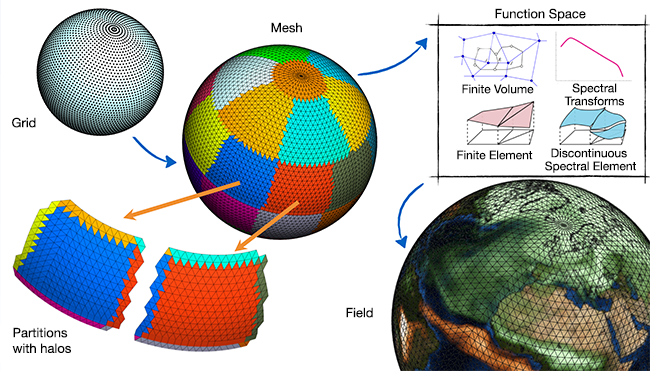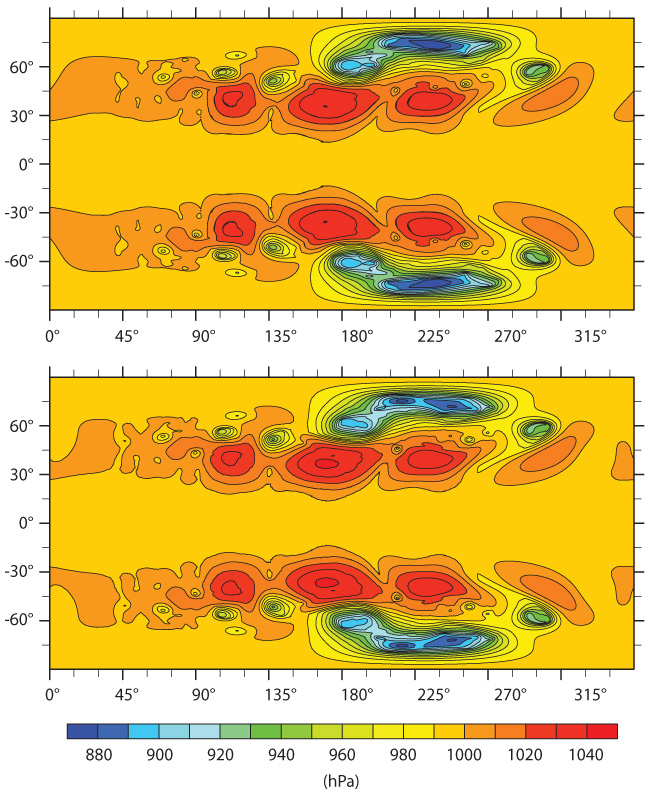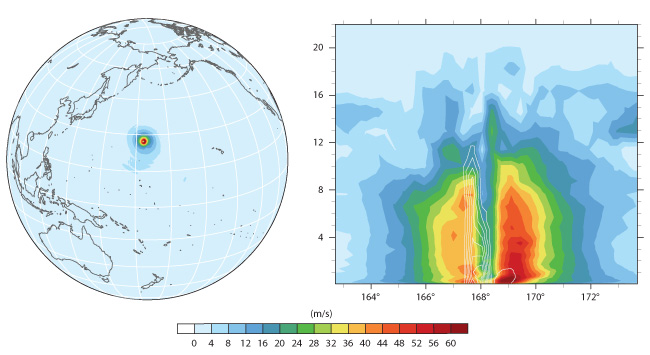

As the European Research Council (ERC) celebrates its tenth anniversary, an ERC-funded frontier research project hosted by ECMWF is making decisive progress in exploring novel numerical methods for weather prediction and climate projection.
Future supercomputing architectures providing exascale capabilities will rely on massively parallel computing with a hierarchical arrangement of compute capability.
This requires adaptation and greater algorithmic flexibility of the complex forecasting and assimilation systems.
The PantaRhei project (ERC Advanced Grant agreement no. 320375) explores a hybrid approach to predicting global weather and climate that synthesises the complementary skills of two exceptionally successful modelling systems: ECMWF's Integrated Forecasting System (IFS) and the nonhydrostatic research model EULAG formulated by Piotr Smolarkiewicz, the project’s principal investigator.
The developments explored as part of the PantaRhei project include new mathematical tools that combine the strengths of well-established methods in numerical weather prediction with methods originating from other computational fluid dynamics disciplines.

One of the ways to keep computational cost down is to find clever ways to arrange the model’s grid points. The grid used at ECMWF is shown here for illustrative purposes at a much lower resolution than the operational one. It is designed to work well with numerical methods which may be used in the IFS in the future. The mesh constructed from the grid is partitioned into areas between which information can be exchanged efficiently via ‘halos’. Mesh information is combined in alternative 'function spaces' to evolve the physical fields in time.
Major achievements of PantaRhei include:
- the development of a unified framework enabling consistent integrations of soundproof and compressible partial differential equations (PDEs) of all-scale atmospheric dynamics
- the development of a new module to complement the Integrated Forecasting System (IFS) – the high-performance, all-scale Finite-Volume Module (FVM).
Theoretical foundations of the FVM have been rigorously developed to enable research in atmospheric fluid dynamics, numerical methods and high-performance computing.
The FVM contains features recognised as important areas for future developments in global atmospheric modelling, such as a nonhydrostatic deep-atmosphere formulation with fully compressible Euler equations, a generalised time-dependent vertical coordinate, and flexible horizontal discretisation enabling mesh adaptivity, to name just a few.
Importantly, as illustrated below, the FVM matches the accuracy of the IFS spherical-harmonics solutions while sharing with the IFS a flexible spatial discretisation and parallel domain decomposition and a compatible two time-level semi-implicit time integrator.

Surface pressure after 15 days of simulating a baroclinic instability at about 16 km horizontal resolution using the novel FVM (top) and the IFS reference simulation (bottom).
Recent work has extended the FVM to moist atmospheric flows enabling cloud-resolving simulations of global atmospheric flows.
The key feature of the representation of the water substance in the FVM is global conservation of the water substance to machine precision – ensured by local conservativeness and positivity preservation of the numerics – for water vapour, cloud water and precipitation. The figure below illustrates a tropical cyclone simulation where these aspects are relevant.

An idealised tropical cyclone simulation after 10 days. The globe image shows the near-surface wind magnitude surrounding the cyclone, and the chart provides a view of a vertical section across the cyclone showing the wind magnitude (shading) and rain-water mixing ratio (contours).
More information
For an overview of the finite-volume module developed as part of the PantaRhei project, see the article by Smolarkiewicz et al. in ECMWF Newsletter No. 145 (PDF), Autumn 2015.
More details can be found in an article by Smolarkiewicz et al. in the Journal of Computational Physics, 314 (2016) and in this presentation by Dr Smolarkiewicz. Further references can be found on the PantaRhei project page.
The European Research Council has set up a mini-website devoted to the ERC 10th anniversary celebrations.
